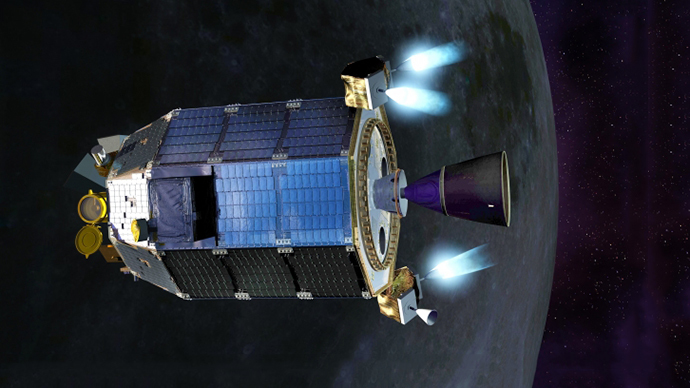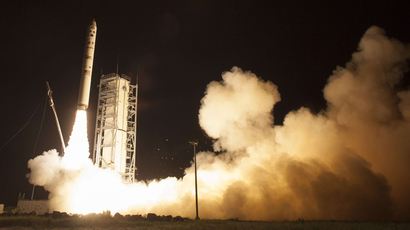NASA hails new era of laser-fast interplanetary internet

NASA has just set a new record for communication speeds in space by firing lasers at the moon and achieving download speeds five times faster than via the radio signals we currently employ for the task.
The information beamed by lasers on Earth was sent to a probe named Lunar Atmosphere and Dust Environment Explorer (LADEE), launched last month with the aim of measuring the Moon’s hardly evident atmosphere while orbiting it. Aboard that probe are a series of lasers mounted onto the outer hull.
Those lasers constitute a device called the Lunar Laser Communication Demonstration (LLCD), and its recent data transmissions hit speeds of up to 622 megabits per second (Mbps), with an upload rate of 75 Mbps, NASA reported. This is about 10 times as fast as the strongest download speeds the commercial Internet can reach.
The need for a technology that does not rely on radio waves grows stronger the farther away a space vessel is. Earth-based satellite dishes have to be larger as well. For example, Voyager 1, our most distant probe, now requires a 70-meter dish with a 34 meter-long antenna on Earth just to receive signals. LLCD functions with the aid of three terminals located at telescopes in New Mexico, California and Spain.
The new possibilities include being able to send data much faster to and from deep space; this will also include higher resolution images and even 3D videos.
"We are encouraged by the results of the demonstration to this point, and we are confident we are on the right path to introduce this new capability into operational service soon," NASA’s deputy associate administrator for space communications and navigation (SCaN) said in a press release.
"We are encouraged by the results of the demonstration to this point, and we are confident we are on the right path to introduce this new capability into operational service soon,” Younes said.
Although this is all spells great news for humanity, the current experiment is to only last for 100 days, before the probe will plummet into the Moon to keep from clogging up the satellite’s already trashy orbital paths.
However, 2017 will mark the start of the program’s new incarnation – the Laser Communications Relay Demonstration (LCRD). New hardware will be installed and the craft’s ability to endure long periods of operation in space will be tested; this includes operations at distances much farther than from the Earth to the Moon.
The laser equipment used for such data transfers is only four inches (10 centimeters) long and uses much less power than radio communications. The upcoming mission will last two years and is expected to open up new possibilities for sending immense amounts of data about our stellar neighborhood back to us.














